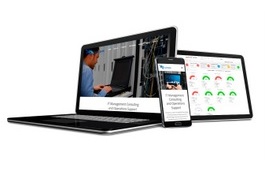AgileEngine is a privately held company established in 2010 and HQed in the Washington DC area. We rank among the fastest-growing US companies on the Inc 5000 list and the top-3 software developers in DC on Clutch. Facebook, Play Store, and the Webby Awards featured the apps we’ve built.
Boasting the best software product developers and designers from the US, Ukraine, and Argentina, we work with VC startups and renowned tech brands. We offer a complete range of services, from dedicated remote teams to onsite consulting.
Our portfolio includes two proprietary products that revolutionize the work of thousands of developers at companies like Mercedes and Samsung.
Sky's the limit for the AgileEngine rocket ship!
Focus Areas
Service Focus
- Software Development
- Mobile App Development
- Testing Services
- App Designing (UI/UX)
Client Focus
- Medium Business
- Large Business
- Small Business
Industry Focus
- Financial & Payments
- E-commerce
- Automotive
AgileEngine Executive Interview

Headquartered in DC, we have four nearshore R&D centers in Ukraine and Argentina. Over the past decade, we’ve become one of the fastest-growing privately-held businesses in the US, according to the Washington Business Journal and Inc 5000.
This has had many positive results. Gartner, the Webby Awards, and Facebook featured our work. The solutions we’ve built for our clients enabled them to raise funding and save up to 90% on product scaling.
Our model supports on-site architects, consultants, and team leads or brief visits and business trips to the client’s location. We also encourage our clients to visit our R&D centers, meet their teams in person, and see how we work.
Our software developers, QAs, designers, data engineers, and managers, effectively become our clients’ remote team members working on their products full-time. Some of them have spent more than three years working with the same client. In the case of some projects, our engineers do tech talks for our clients and visit their main offices in the US annually.
- Team size and composition. Having enough people on the team is crucial (even though more doesn’t always imply faster). The technical knowledge, soft skills, seniority, and expertise of these people with similar projects are also necessary.
- Project type, scope, and complexity influence the time frames in the most direct way.
- Technical debt. Large-scale re-architectures or migrations often take longer than greenfield projects. When dealing with a badly-implemented solution, you need to figure it out first and then fix or rebuild it.
- Development tools. Do the backend and infrastructure use readymade solutions like AWS? Is there a library or framework like React or Vue underlying the web UI? Is the mobile app fully native or built with React Native or Flutter? All of these factors have a massive impact on time frames.
- Project management methodology and process. Things tend to go faster in the long term if there is a good process in place complete with robust QA.
- It needs sufficient support from its developers and the open-source community (if it’s open-source).
- It needs to have sufficient following among software engineers. Should you decide to add new members to your team, the tools you’ve chosen should never create bottlenecks in the form of talent shortage.
Accurate native mobile applications constitute a large part of our portfolio, which means Swift, Kotlin, Objective-C, and Java.
Most of our projects are long-term, with enormous scope and complexity. We build B2B software solutions for Fortune 500 companies and apps for multi-million audiences. At this scale, it’s more difficult for our clients to precisely estimate budgets early on. Most of our projects also use Lean and agile, which means changing requirements. Due to these two reasons, the flexibility of the Time and Material model works better for our clients and us.
AgileEngine Clients & Portfolios
Key Clients
- Transvoyant
- Delivery Hero
- VMware
- Shutterstock
- IGN
- Logi Analytics
- TechStyle Fashion Group
- GroupON
- Relativity











AgileEngine Reviews
- All Services
- Software Development
- Mobile App Development
- Relevance
- Most Recent
- Rating: high to low
- Rating: low to high

AgileEngine Outstanding Services
Review Summary
I am very impressed with the caliber of professionals at AgileEngine, would highly recommend them and look forward to the next opportunity to work with them.
What service was provided as part of the project?
Mobile App Development

AgileEngine delivers ease and reliability
Review Summary
What service was provided as part of the project?
Software Development











